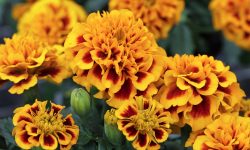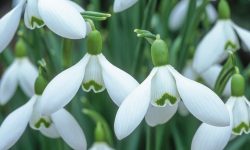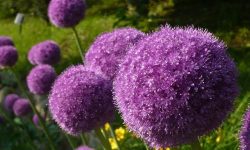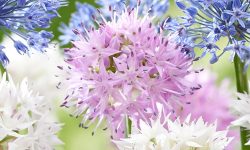Jasmine, known for its intoxicating fragrance and delicate white or yellow flowers, is a beloved plant in gardens and homes around the world. Whether grown indoors or outdoors, jasmine can provide year-round beauty and aroma if cared for properly. This guide offers a comprehensive look at how to nurture your jasmine plant so it thrives through every season.
Understanding Jasmine Varieties
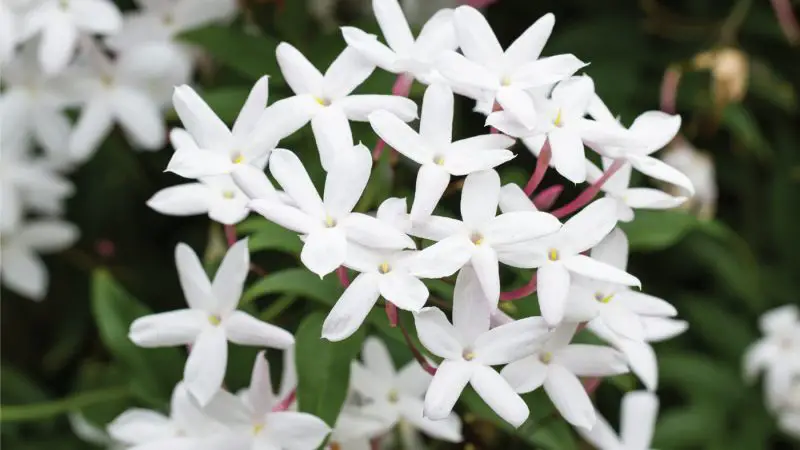
Common Types of Jasmine
There are several species of jasmine, but the most popular for home gardening include Common Jasmine (Jasminum officinale), Arabian Jasmine (Jasminum sambac), and Winter Jasmine (Jasminum nudiflorum). Each has its own growth habit and care preferences, so it’s important to identify the species you have.
Common Jasmine is a deciduous climber with sweet-scented white flowers. Arabian Jasmine, often used in teas and perfumes, is an evergreen shrub or vine with waxy, highly fragrant blooms. Winter Jasmine blooms in colder months and has bright yellow flowers but lacks the strong fragrance typical of other varieties.
Choosing the Right Jasmine for Your Space
If you’re planning to grow jasmine indoors, opt for Arabian Jasmine or Dwarf Jasmine, which adapt well to containers. For outdoor landscaping, Common or Winter Jasmine are ideal for trellises, fences, and ground cover.
Creating the Ideal Growing Environment
Sunlight Needs
Jasmine plants thrive in bright light and need at least four to six hours of sunlight each day. Outdoor jasmines do best in full sun or light shade, while indoor varieties should be placed near a south-facing window. In winter months, supplemental grow lights can help maintain flowering indoors.
Soil Requirements
Well-draining soil is crucial for healthy jasmine plants. Use a light, loamy mix with good organic content. If planting in containers, choose a potting mix that retains some moisture but doesn’t stay soggy. Poor drainage can lead to root rot and stunted growth.
Temperature and Humidity
Jasmine prefers moderate to warm temperatures. Most species thrive between 60°F and 75°F (15°C to 24°C). Protect the plant from drafts and sudden temperature changes. High humidity supports flowering, so indoor growers may need to use a humidifier or place the pot on a tray filled with pebbles and water.
Watering Jasmine the Right Way
Establishing a Watering Routine
During the active growing season (spring through summer), jasmine requires consistently moist soil. Water thoroughly when the top inch feels dry, but avoid waterlogging. In winter, reduce watering as the plant’s growth slows. For container plants, ensure the pot has drainage holes to prevent excess water retention.
Signs of Overwatering and Underwatering
Yellowing leaves and mushy stems are indicators of overwatering, while drooping or crisp leaves suggest underwatering. Adjust your watering schedule based on the plant’s response and environmental conditions.
Feeding Your Jasmine for Maximum Blooms
Fertilizer Types and Timing
Fertilize jasmine every four to six weeks during the growing season with a balanced, water-soluble fertilizer. A formula high in phosphorus will encourage more flowers. Organic options such as compost tea or fish emulsion are also effective.
Avoid feeding in late fall or winter when the plant is dormant. Over-fertilization can lead to lush foliage with few blooms, so always follow product instructions.
Soil Enrichment Tips
Enhance soil fertility by adding compost or well-rotted manure before planting or during early spring. This provides a slow-release source of nutrients and improves soil structure.
Pruning and Training for Better Growth
When and How to Prune Jasmine
Regular pruning is essential to keep jasmine healthy and encourage more flowering. The best time to prune is immediately after the plant has finished blooming. Remove dead or weak stems, and trim back excessive growth to maintain shape and size.
For climbing varieties, prune to guide them along trellises or arbors. Indoor jasmines can be trimmed to stay compact and bushy.
Training Jasmine Vines
To train your jasmine vine, gently tie new shoots to a support structure using soft garden ties or twine. Direct the growth where you want coverage, and prune any offshoots that stray too far.
Managing Pests and Diseases
Common Pests
Jasmine can be susceptible to aphids, spider mites, and whiteflies. Regularly inspect the leaves, especially the undersides, for small insects or webbing. Neem oil or insecticidal soap can effectively control infestations without harming the plant.
Preventing Fungal Issues
Fungal problems such as powdery mildew or leaf spot may occur in overly humid or poorly ventilated environments. To prevent this, water at the base of the plant and ensure good air circulation. If fungal issues arise, treat with an appropriate fungicide and remove affected leaves.
Overwintering Jasmine Plants
Outdoor Jasmine in Cold Climates
In regions with harsh winters, outdoor jasmine plants may need protection. Apply a thick layer of mulch around the base in late fall to insulate the roots. For container-grown plants, bring them indoors before the first frost and place them in a sunny spot.
Indoor Jasmine Care in Winter
Indoors, reduce watering and stop fertilizing during winter. Keep the plant near a bright window, and maintain humidity levels to prevent leaf drop. While blooming may slow, proper care ensures the plant rebounds in spring.
Encouraging Year-Round Blooms
Light and Temperature Management
Maintaining consistent light and temperature is key to year-round flowering. If natural sunlight is insufficient, use grow lights to extend daylight hours. Avoid placing the plant near heating vents or drafty windows, as temperature fluctuations can disrupt blooming cycles.
Rest Periods and Rejuvenation
Most jasmine plants benefit from a short rest period in late fall or winter. During this time, allow the soil to dry slightly between waterings and withhold fertilizer. This mimics natural dormancy and encourages a stronger flush of growth and flowers in spring.
Repotting and Propagation
When to Repot
Jasmine should be repotted every two to three years or when roots outgrow the container. The best time to repot is in early spring before active growth resumes. Choose a slightly larger pot and refresh the soil with a rich, well-draining mix.
Propagating New Jasmine Plants
Jasmine can be easily propagated through stem cuttings. Select a healthy, non-flowering stem and cut just below a node. Remove lower leaves and place the cutting in moist potting mix or water. Keep it warm and humid, and roots should develop within a few weeks.
Jasmine Care for Different Settings
Indoor Jasmine
Indoor jasmine requires bright, indirect light and high humidity. Regular misting, occasional pruning, and consistent watering are essential. Choose a sunny windowsill or supplement with grow lights during darker months.
Outdoor Jasmine
Outdoor jasmine thrives in garden beds, along fences, or in large containers. Provide support for climbing varieties, and mulch the base to retain moisture. Protect the plant from strong winds and frost to maintain health year-round.
How often should I water my jasmine plant?
Jasmine plants prefer evenly moist soil, especially during their active growing period in spring and summer. You should water them when the top inch of soil feels dry to the touch. Overwatering or letting the roots sit in soggy soil can lead to root rot, so good drainage is essential. In winter, reduce watering frequency to match the plant’s slower growth cycle.
Why is my jasmine not blooming?
Several factors can affect jasmine flowering. Insufficient sunlight is the most common reason—jasmine needs at least 4–6 hours of bright light daily. Other reasons include overfertilization (too much nitrogen), lack of pruning, or the plant being too young. Ensuring the right balance of light, nutrients, and occasional rest periods will encourage blooms.
Can jasmine grow indoors year-round?
Yes, jasmine can be grown indoors all year, especially varieties like Arabian Jasmine. However, it requires a bright, sunny window or supplemental grow lights. Indoor humidity must be maintained with misting, humidifiers, or pebble trays. Also, occasional pruning is necessary to control its size and encourage bushy growth.
What is the best fertilizer for jasmine?
A balanced, water-soluble fertilizer with a higher phosphorus content (e.g., 10-30-10) is ideal for promoting jasmine blooms. Feed the plant every 4–6 weeks during the growing season. Organic alternatives like fish emulsion or compost tea are effective too. Avoid fertilizing during winter dormancy.
How do I propagate jasmine at home?
Jasmine is easily propagated from stem cuttings. Take a healthy, non-flowering stem, cut below a leaf node, and remove the bottom leaves. Place the cutting in moist soil or water until roots form. Keep it warm and humid for successful rooting. This is best done in spring or early summer.
What pests are common with jasmine, and how can I treat them?
Jasmine can attract aphids, spider mites, mealybugs, and whiteflies. Regularly inspect the plant, especially the undersides of leaves. Treatment includes spraying with neem oil, insecticidal soap, or using natural predators like ladybugs in outdoor gardens. Keeping the plant clean and stress-free helps prevent infestations.
Can jasmine survive winter outdoors?
Hardy varieties like Winter Jasmine can survive cold climates if protected. Mulch around the roots in late autumn and shield from harsh winds. In zones with severe frost, container-grown jasmine should be brought indoors before temperatures drop. Always reduce watering during winter.
Does jasmine need to climb, or can it grow as a bush?
Jasmine comes in both climbing and bush varieties. Common Jasmine and Pink Jasmine are climbers and require a trellis or support. Arabian Jasmine can grow as a small shrub if pruned regularly. Your plant’s natural growth habit and pruning style will determine its final shape.
Final Thoughts on Jasmine Care
Caring for jasmine doesn’t have to be complicated. With the right balance of sunlight, water, nutrients, and pruning, your jasmine plant can bloom continuously and add elegance and fragrance to any space. Whether you’re growing it in a pot by your window or training it to climb a garden trellis, jasmine rewards attentive care with lush growth and intoxicating flowers.
Stay in tune with your plant’s needs throughout the seasons, and you’ll enjoy vibrant blooms and a sweet aroma all year long.

